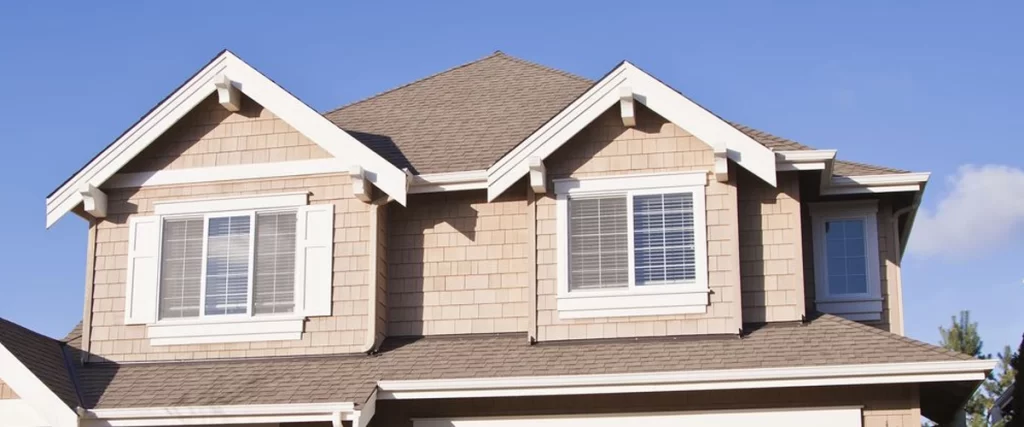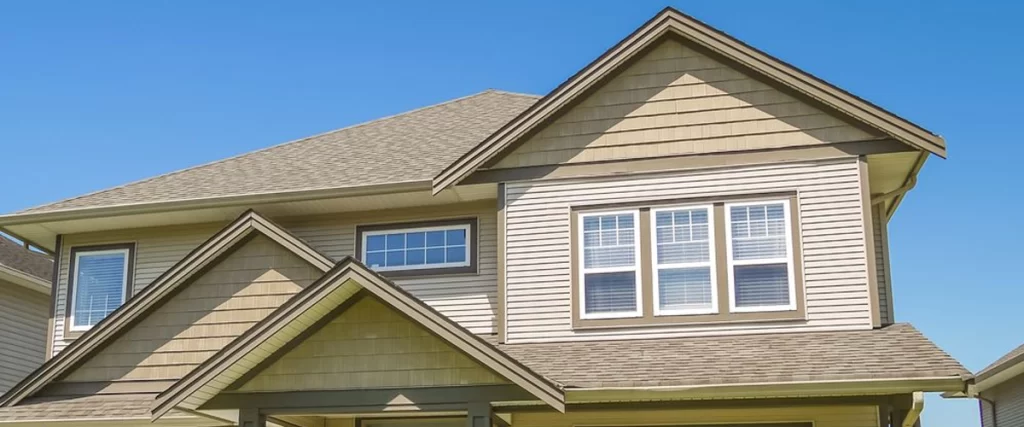Vinyl siding is one of the most widely used exterior materials on homes throughout the Midwest, including here in Omaha. It’s popular for its affordability, visual appeal, and reputation as a low maintenance option. But when homeowners start thinking about investing in new siding replacement or evaluating their existing siding, a common question comes up: how long does vinyl siding last?
The short answer is several decades, but there’s more to it than a number. The actual lifespan depends on installation quality, material grade, weather exposure, and care over time. With proper upkeep, high quality vinyl siding can last much longer than many expect, often outlasting other siding materials like wood, aluminum, and sometimes even fiber cement.
Here’s a look at how long vinyl siding can really last, the key factors that affect its performance, and how to maintain it so it stays strong and looks sharp year after year.

How Long Does Vinyl Siding Last on Average?
Most homeowners can expect vinyl siding to last 20 to 40 years. Higher-end products, when properly installed and maintained, can go beyond 50 years. Some even carry limited lifetime warranties.
Still, lifespan isn’t fixed. It can be shortened by factors like poor installation, prolonged exposure to UV rays, moisture infiltration, or regular impacts from debris and harsh weather.
A few of the biggest influences on how long vinyl siding will hold up:
- Material quality – Not all siding panels are created equal. Thicker, more durable products resist warping, fading, and cracking much better than low-end materials.
- Installation – Poor installation leads to loose panels, gaps, and increased risk of water damage. Panels that aren’t properly fastened can buckle or blow off in strong winds.
- Climate and exposure – In areas with hot summers, extreme temperature swings, and strong winds, vinyl can experience more stress over time. Omaha’s weather puts siding to the test, especially on homes with lots of sun exposure or little protection from wind.
- Maintenance – While vinyl is often described as low maintenance, that doesn’t mean no maintenance. Regular cleaning and siding repair make a big difference.
Comparing Vinyl to Other Siding Materials
Many homeowners explore different siding options before settling on vinyl. Here’s how vinyl stacks up in terms of longevity and maintenance needs compared to some other popular materials:
| Siding Type | Average Lifespan | Maintenance Level | Susceptibility Issues |
| Vinyl | 20–40+ years | Low | Fading, cracking in heat |
| Wood | 15–25 years | High | Rot, insects, warping |
| Aluminum | 20–30 years | Moderate | Dents, chalking, corrosion |
| Fiber Cement | 25–40 years | Moderate | Cracking, paint chipping |
| Steel Siding | 30–50+ years | Low | Rust in some cases |
For many, vinyl remains a cost-effective siding repair. It holds up well over time with less upkeep and is easier to replace in sections if something gets damaged.
Key Factors That Influence Vinyl Siding Lifespan
The actual lifespan of vinyl siding can vary by home. Some siding lasts 25 years and still looks good, while others begin showing their age after 15. Here’s what really makes the difference:
1. Sun Exposure
South-facing walls or parts of the home that receive strong, direct sunlight tend to fade or degrade faster. UV rays can cause discoloration or make the siding brittle over time.
2. Temperature Fluctuations
Vinyl expands and contracts with temperature changes. In climates like Omaha, where winters get freezing cold and summers bring high heat, this cycle puts stress on each panel. Over time, this can lead to cracks, gaps, or buckling especially if the siding was installed without room to move.
3. Moisture and Ventilation
Moisture trapped behind siding can shorten its lifespan. That includes condensation, leaky gutters, or poor ventilation in walls. Trapped water can lead to mold growth, damage to the siding’s backing material, or even compromise the structural integrity of the wall beneath.
4. Installation Quality
Siding that’s installed too tightly may warp. Panels hung too loosely may detach or rattle in the wind. Proper spacing, correct fasteners, and thoughtful handling around corners and windows all matter.
5. Nearby Hazards
Grills or fire pits placed too close to siding can melt or warp panels. Trees that scrape siding during storms can lead to minor cracks or gouges. Even repeated impacts from sports balls or yard tools add up.
Maintenance Tips to Extend the Life of Vinyl Siding
Proper care goes a long way toward making siding last. The good news is that maintenance for vinyl is simple, just stay ahead of minor issues before they turn into bigger ones.
1. Wash It Once or Twice a Year
Dirt, pollen, and mildew can build up on siding, especially on north-facing or shaded walls. Use a garden hose or a pressure washer on a low setting to remove dirt. A soft brush and a bucket of mild detergent (like dish soap mixed with water) can help with tougher spots.
Avoid harsh chemicals. Bleach or abrasive cleaners can damage the finish and shorten the siding’s life.
2. Inspect Annually for Damage
Walk around your home at least once a year and look for signs of:
- Loose panels
- Minor cracks
- Warping or bubbling
- Discoloration or chalky residue
Catching issues early can prevent water infiltration or deeper damage. Replace or repair small sections as needed.
3. Keep Gutters and Downspouts Clear
Clogged gutters overflow, sending water down your siding repeatedly. Over time, this can lead to streaking, mold growth, or even degradation of siding materials.
Ensure all water is directed away from the foundation and walls.
4. Trim Trees and Shrubs
Branches rubbing against siding panels in the wind can scuff or scratch the surface. Keep landscaping trimmed to prevent contact.
5. Move Heat Sources Away
Grills, outdoor heaters, or anything that gives off strong heat should be kept several feet from your siding. Prolonged exposure to high temperatures can cause warping or melting.
Signs It Might Be Time to Replace Your Vinyl Siding
Even with great care, there will come a time when replacing vinyl siding is the best move. You don’t always need a full replacement right away, but certain signs suggest your current siding may be reaching the end of its useful life.
- Panels are faded beyond cleaning or refinishing
- You see widespread cracks or brittleness
- Panels are warped, buckled, or pulling away
- You notice increased energy bills due to poor insulation or gaps
- Mold or mildew keeps returning after cleaning
- Sections of siding are missing or have come loose
- There’s visible water damage beneath the siding
Old siding can also affect your home’s curb appeal and overall home value. Replacing it with new, high quality vinyl can instantly give your home a fresh look while improving energy efficiency and long-term protection.
Why Maintenance Is Worth It
Vinyl siding is a significant investment, and protecting that investment with simple maintenance can help it last much longer. Properly installed vinyl can easily outlive expectations, especially when it’s cleaned regularly, inspected for damage, and kept clear of moisture and heat sources.
Even if it doesn’t require painting or sealing like wood siding, vinyl still deserves regular attention. A few hours a year can add years to its lifespan and save you from dealing with a more expensive replacement sooner than necessary.

Or Maybe You’d Rather Just Have Us Handle It
If all of this sounds like a lot to stay on top of, washing, inspecting, repairing, tracking down issues, you’re not alone. Many homeowners would rather get it done right the first time with a siding team they trust.
At Carp’s Complete Exteriors, we’ve helped homeowners throughout Omaha with siding installation that lasts. We use experienced installers, work with high quality vinyl siding, and take care of every detail, from prep to clean-up. Whether you’re dealing with old siding, damage from recent storms, or just want a siding option that will hold up to Nebraska’s wild weather, we’re here to help.
Call us at (402) 651-1493 or Contact us to talk about your siding needs. We’ll make sure your home is protected, efficient, and looks great for years to come.
